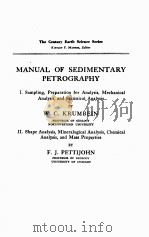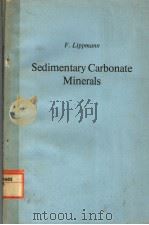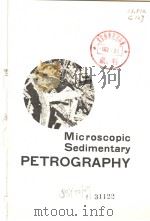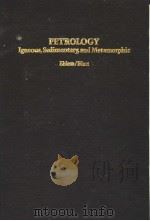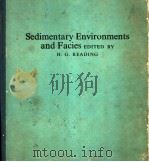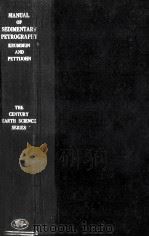《Sedimentary Rocks》
| 作者 | F.J.Pettijohn 编者 |
|---|---|
| 出版 | Harper & Brothers Publishers New York |
| 参考页数 | 526 |
| 出版时间 | 1949(求助前请核对) 目录预览 |
| ISBN号 | 无 — 求助条款 |
| PDF编号 | 813811838(仅供预览,未存储实际文件) |
| 求助格式 | 扫描PDF(若分多册发行,每次仅能受理1册) |
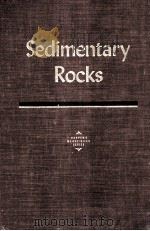
1. INTRODUCTION1
QUANTITY AND KINDS OF SEDIMENTARY DEPOSITS1
Relative Importance of Sediments1
Total Volume of Sediment2
Relative Abundance of the Common Sediments3
MAJOR CLASSES OF SEDIMENTARY DEPOSITS5
THE STUDY OF SEDIMENTS7
2. TEXTURES8
INTRODUCTION8
PARTICLE SIZE OF CLASTIC ROCKS9
Concept of "Size"9
Descriptive Size Terms11
Grade Scales15
Size Frequency Distributions and Graphic Representation19
HISTOGRAMS20
FREQUENCY CURVES21
CUMULATIVE CURVES22
Statistical Parameters of Frequency Distributions22
Textural Classification of Clastic Sediments and Naming of Aggregates26
Interpretation of Size Analyses30
PURPOSES AND SIGNIFICANCE OF SIZE ANALYSES30
NATURE OF THE FREQUENCY CURVE34
POLYMODAL DISTRIBUTIONS39
RELATIVE FREQUENCY OF THE SIZE GRADES41
SHAPE AND ROUNDNESS OF CLASTIC GRAINS46
Shape46
Roundness49
Evaluation and Geologic Significance of Roundness and Shape53
SURFACE TEXTURES OF CLASTIC GRAINS55
FABRIC AND PACKING58
Definitions58
Fabric59
FABRIC ANALYSES59
FABRIC OF GRAVELS AND CONGLOMERATES62
FABRIC OF SANDSTONES64
FABRIC OF CLAY, SHALE, AND OTHER DEPOSITS65
Packing65
POROSITY AND PERMEABILITY67
Porosity67
Permeability69
TEXTURES OF CHEMICAL (ENDOGENETIC )SEDIMENTS72
Crystalline Texture72
Crystalloblastic Textures72
Colloform Textures74
Oolites and Related Structures75
3.COMPOSITION81
CHEMICAL COMPOSITION81
MINERALOGY OF THE SEDIMENTARY ROCKS84
Group A:Stable Primary Minerals89
QUARTZ90
FELDSPAR91
MICAS96
MINOR ACCESSORY MINERALS("HEAVY MINERALS")96
ROCK FRAGMENTS99
Group B: Stable Secondary Minerals100
CLAY MINERALS100
OXIDES OF IRON AND ALUMINA106
Group C: Chemically Precipitated Minerals107
CARBONATE SERIES107
Calcite108
Aragonite108
Dolomite109
Ankerite109
Siderite109
SILICA GROUP109
SILICATES112
Chamosite113
Glauconite113
Other Iron-Bearing Silicates114
PHOSPHATES115
SULFIDES115
SULFATES116
HALIDES116
Group D: Volcanic Debris116
Group E: Organic Matter117
RADIOACTIVITY118
4. STRUCTURES120
INTRODUCTION AND CLASSIFICATION120
PRIMARY OR MECHANICAL STRUCTURES121
Bedding121
DEFINITIONS121
CLASSIFICATION124
CURRENT BEDDING127
Laminations127
Ripple Mark129
Incline Bedding132
Torrential Bedding134
GRADED BEDDING134
THE SEDIMENTATION UNIT AND ITS RELATION TO OTHER PROPERTIES139
Special Features of Bedding Planes143
MUD CRACKS143
MISCELLANEOUS MARKS AND STRUCTURES144
Bedding of Nonclastic Rocks144
Contemporaneous Deformation145
Unconformities and Diastems146
Armored Mud Balls, Clay Galls, and Related Structures146
DEFINITIONS146
MUD BALLS146
CLAY GALLS148
SECONDARY ("CHEMICAL") STRUCTURES149
Accretionary Structures149
DEFINITIONS AND CLASSIFICATION149
NODULES149
SPHERULITES AND ROSETTES150
CONCRETIONS (RESTRICTED)151
GEODES151
CONCHILITES153
SEPTARIA154
CONTRACTION SPHERIODS155
Cone-In-Cone155
Stylolites156
Crystal Molds157
Joints, Veins, and Dikes157
ORGANIC STRUCTURES (FOSSILS)158
Definition158
Mode of Preservation159
The Inorganic Composition of Marine Invertebrates161
Organisms as Rock Builders162
Petrology of Fossils163
CALCAREOUS ALGAE163
CALCAREOUS FORAMINIFERA164
CORALS164
ECHINODERMS164
BRYOZOA165
BRACHIOPODS165
MOLLUSCS165
Organisms as Documents of Milieu165
Fossils and Geochronology167
5. COLOR169
INTRODUCTION169
SIGNIFICANCE OF COLOR170
Red Beds170
Organic Matter and the Color of Sediments175
6. CLASSIFICATION177
PRINCIPLES OF CLASSIFICATION AND NOMENCLATURE177
GRABAU'S CLASSIFICATION180
Endogenetic(Chemical)Rocks180
Exogenetic(Clastic)Rocks182
Critique of Grabau's Classification184
KRYNINE'S CLASSIFICATION185
GRAPHIC REPRESENTATION OF COMPOSITION187
THE ORIGIN AND CLASSIFICATION OF SEDIMENTS191
The Clastic Sediments192
The Chemical Sediments193
The Epigenic Sediments193
7. CONGLOMERATES AND BRECCIAS195
INTRODUCTION195
Definitions195
Classification196
TEXTURES OF GRAVELS AND CONGLOMERATES197
COMPOSITION OF CONGLOMERATES AND GRAVELS203
PSEUDOCONGLOMERATES207
EPICLASTIC CONGLOMERATES AND BRECCIAS207
Oligomictic Conglomerates207
Polymictic Conglomerates208
Intraformational Conglomerates and Breccias210
CATACLASTIC CONGLOMERATES AND BRECCIAS211
Till and Tillite212
Tectonic Conglomerates and Breccias223
PYROCLASTIC CONGLOMERATES AND BRECCIAS224
8. SANDSTONES226
INTRODUCTION226
Definitions226
Classification226
Relative Abundance of Principal Types of Arenites229
TEXTURES OF SANDS AND SANDSTONES232
ORTHOQUARTZITE237
Definition237
Composition237
Textures and Structures241
Origin242
GRAYWACKE243
Definition243
Composition245
Textures and Structures251
Origin252
SUBGRAYWACKE255
Definition255
Composition256
Textures and Structures257
Origin and Occurrence257
ARKOSE257
Definition257
Composition258
Textures and Structures258
Occurrence and Associations258
Origin259
PYROCLASTIC ARENITES (TUFFS)261
Description and Classification261
Properties of Tuffs and Tuffaceous Sediments265
Alteration267
Association and Distribution267
9. SHALES AND ARGILLITES269
DEFINITIONS269
COMPOSITION270
Chemical Composition270
Mineral Composition273
TEXTURES AND STRUCTURES274
Grain Size274
Porosity277
Fissility278
Laminations280
CLASSIFICATION AND ORIGIN281
RESIDUAL CLAYS282
TRANSPORTED CLAYS284
Common Clays and Shales284
Glacial Clays284
MARLS AND OTHER HYBRID CLAYSTONES AND BIOPELITES285
Marls and Calcareous Mudstones286
Clay Ironstones and Ferriferous Mudstones286
Siliceous Shales286
Black Shales (Biopelites)288
10. LIMESTONES AND DOLOMITES289
INTRODUCTION289
Definitions289
GENERAL CHARACTERISTICS290
Mineral Composition290
Chemical Composition292
Origin and Genetic Classification292
AUTOCHTHONOUS (ACCRETIONARY OR BIOCHEMICAL)LIMESTONE294
Role of Organisms in Limestone Formation295
Biohermal Limestone (Klintite)296
Biostromal (Coquinoid) Limestone299
Pelagic Limestone299
ALLOCHTHONOUS (CLASTIC) LIMESTONES300
Calcarenites and Calcirudites300
Calcilutites307
CHEMICAL LIMESTONE307
THE METASOMATIC CARBONATE ROCKS309
Metasomatism309
Dolomites312
Other Metasomatic Carbonates317
11. NONCLASTIC SEDIMENTS318
INTRODUCTION318
SILICEOUS SEDIMENTS320
Definitions and Classification320
Mineralogy and Occurrence of Sedimentary Chemical Silica321
Petrography of the Cherts323
Origin of Chert328
Siliceous Earths332
Depth of Water333
IRON-BEARING SEDIMENTS333
Definitions333
Mineralogy and Classification333
Bedded Siderites and Cherts334
Iron-Silicate-Bearing Sediments338
Ferric Oxides and Hydroxide-Bearing Sediments341
Iron-Sulfide Deposits345
THE MANGANESE-BEARING SEDIMENTS347
PHOSPHORITE AND OTHER PHOSPHATIC SEDIMENTS348
Definitions348
Mineralogy and Composition350
Petrology350
Associations and Occurrence352
Origin353
SALINES AND OTHER EVAPORITES (EXCLUDING LIMESTONES)354
Definitions and Classification354
Mineralogy and Composition354
Textures and Structures355
Associations and Occurrence356
Origin of Evaporites358
THE CARBONACEOUS ROCKS362
Introduction362
ORGANIC RESIDUES AND THE CARBON CYCLE362
FORMS OF THE ORGANIC RESIDUES362
The Coal Series365
GENERAL CHARACTERISTICS AND CLASSIFICATION365
COAL NOMENCLATURE366
CHEMICAL COMPOSITION OF COAL369
OCCURRENCE OF COAL370
ORIGIN OF COAL370
Sapropel, Petroleum, and Natural Gas371
12. WEATHERING373
INTRODUCTION373
WEATHERING PRODUCTS374
Textures374
Structures of Residual Deposits376
Composition of Residual Deposits376
THE STABILITY OF ROCK MATERIALS377
Mobility of the Oxides377
Stability of Rock-Forming Minerals380
Indices of Maturity382
RELIEF, CLIMATE, AND THE PRODUCTS OF WEATHERING383
Effects of Relief383
Effects of Climate384
Combined Effects of Relief and Climate385
"FOSSIL" SOILS385
13. TRANSPORTATION387
INTRODUCTION387
ABRASION AND SOLUTION388
Definitions388
Analysis of Abrasion389
Effects of Abrasion on Size396
Effects of Abrasion on Roundness and Sphericity400
SPHERICITY AND SIZE400
ROUNDNESS AND SIZE403
ROUNDNESS AND SPHERICITY407
ROUNDNESS AND DISTANCE409
SHAPE AND DISTANCE412
Effects of Abrasion on Mineral Composition415
Effects of Abrasion on Surface Textures418
Effects of Solution418
SORTING418
Size and Sorting419
Shape Sorting420
Mineral Composition and Sorting423
SUMMARY AND RELATIVE IMPORTANCE OF ABRASION AND SORTING431
14. DEPOSITION435
INTRODUCTION435
TECTONICS AND SEDIMENTATION436
GENERAL PRINCIPLES OF SEDIMENTATION439
Clastic Sedimentation439
Chemical Sedimentation440
Mixed or Hybrid Sedimentation441
GEOSYNCLINAL FACIES443
POSTOROGENIC TERRESTRIAL PIEDMONT FACIES449
FORELAND FACIES451
Aerobic Phase451
Atypical Foreland Facies456
EUXINIC OR BLACK-SHALE FACIES457
SALINE FACIES459
MIXED SECTIONS460
DEPOSITION IN THE DEEP SEA463
Pelagic Deposits464
CYCLICAL DEPOSITION466
The Major Cycle466
Varved Sedimentation467
GLACIAL VARVES467
NONGLACIAL VARVES469
Cyclothemic Sedimentation470
The Rates of Sedimentation471
15. LITHIFICATION AND DIAGENESIS476
DEFINITIONS476
COMPACTION478
CEMENTATION480
INTRASTRATAL SOLUTION485
AUTHIGENESIS497
Definitions497
Authigenic Quartz and Chalcedony498
Authigenic Carbonates499
Authigenic Feldspar500
Authigenic Micas and Chlorites503
Authigenic Titania504
Authigenic Sulfates505
Authigenic Sulfides505
Tourmaline504
Zircon505
Authigenic Phosphate505
METASOMATISM506
AUTHOR INDEX509
SUBJECT INDEX514
1949《Sedimentary Rocks》由于是年代较久的资料都绝版了,几乎不可能购买到实物。如果大家为了学习确实需要,可向博主求助其电子版PDF文件(由F.J.Pettijohn 1949 Harper & Brothers Publishers New York 出版的版本) 。对合法合规的求助,我会当即受理并将下载地址发送给你。
高度相关资料
-

- THE FIELD DESCRIPTION OF SEDIMENTARY ROCKS
- 1982 THE OPEN UNIVERSITY PRESS
-
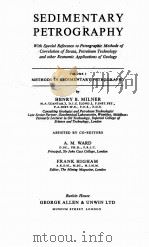
- SEDIMENTARY PETROGRAPHY VOLUME I
- 1962 GEORGE ALLEN AND UNWIN LTD.
-
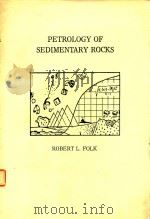
- PETROLOGY OF SEDIMENTARY ROCKS
- 1980 HEMPHILL
-

- The Megascopic Study and Field Classification of Sedimentary Rocks
- 1948 The Brothers' Union Book Shop
-

- SEDIMENTARY ROCKS SECOND EDITION
- 1957 HARPER AND BROTHERS
-
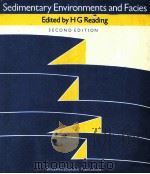
- SEDIMENTARY ENVIRONMENTS AND FACIES
- 1986 BLACKWELL
-
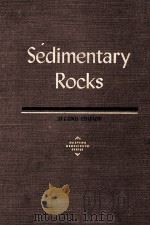
- SEDIMENTARY ROCKS SECOND EDITION
- 1957 HARPER AND BROTHERS
-

- ROCKS AND SOILS
- 1977 McGRAW-HILL BOOK COMPANY SYDNEY
提示:百度云已更名为百度网盘(百度盘),天翼云盘、微盘下载地址……暂未提供。➥ PDF文字可复制化或转WORD

